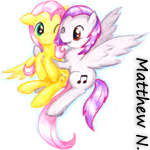So ive been making some better sounding tracks recently, and recently bought Ozone (standard, not all the extra crap) for my mastering, and have been learning more about mixing and mastering in general.
I would like to know what everyone thinks about where certain frequencies should hit for certain instruments,
Ex, from what i learned, Snare drums tend to peak 200hz ish, and the 2k to 10k seems to be where the snares rattle
Kicks tend to be important around 50hz and then again around 5k
Sub bass is like 0-250ish
ect.
I would love to know what to do with vocals, (i really want to get them to sit in the track, not just on top of it) pianos, and toms, and i would also like your guys' input on where you think snares sub kicks and really anything should hit
Frequency Management
11 posts
• Page 1 of 1
-

KillerAmp - Posts: 209
- Joined: 24 Jun 2012 19:40
- Location: New York
- OS: Windin XD
- Primary: Ableton Live 9
- Cutie Mark: Feels
Re: Frequency Management
Lower the sub bass a bit. I'm not sure that a sub bass should be hitting higher than 175 Hz at its highest. But I'm fairly new to sub basses anyways. I have the concept that they should be in the 80-150 range, from what I've read at a few sources. Feel free to correct me on this if I'm wrong.
-

itroitnyah - Posts: 2482
- Joined: 02 Mar 2012 20:27
- OS: Windows 7
- Primary: FL Studio 11
- Cutie Mark: Blank flank
Re: Frequency Management
I would never go over 100Hz with a SUBbass. It's called that for a reason, meaning that it uses very low frequencies and should not take up space of main bass synths, but rather have its own area where it compliments the main bass. Correct me if I'm wrong as well, but that's how I always did my basses - layers and layers of sounds in different frequency ranges.
-

Matthew N. - Posts: 875
- Joined: 08 May 2012 10:45
- Location: Poland
Re: Frequency Management
KillerAmp wrote:So ive been making some better sounding tracks recently, and recently bought Ozone (standard, not all the extra crap) for my mastering, and have been learning more about mixing and mastering in general.
I would like to know what everyone thinks about where certain frequencies should hit for certain instruments.
Ozone is great, I have been using it for over a year now if you have any questions about it PM me or whatever (just throwing that out there).
Frequencies on various instruments is not a science, there is an plethora of variables to consider and calculate to make it a science when it comes to mixing/eqing. It all comes to how it sounds; tone, pitch, amplitude ect.. It also depends on a song to song basis knowing what frequencies to add/remove. Use your ears and take an eq and sweep various curves around and listen to how it changes the individual instrument.
I would love to know what to do with vocals, (i really want to get them to sit in the track, not just on top of it) pianos, and toms, and i would also like your guys' input on where you think snares sub kicks and really anything should hit
Vocals: just reduce volume and add a very small amount or reverb or delay. If they are sitting on top of the mix and you want them below think about your tools (volume and EQ) and how they work. Depending on the song you could want snares and bass in many different parts of the mix, being more genre specific is really import here.
Ex, from what i learned, Snare drums tend to peak 200hz ish, and the 2k to 10k seems to be where the snares rattle
Kicks tend to be important around 50hz and then again around 5k
Sub bass is like 0-250ish
This chart is not science but merely a guideline that's meant to be broken, don't take it for fact as different samples will naturally have different amounts of frequency content.
Also, I found this (not my writing):
Human voice
Scratchy at 2 KHz.
Nasal at 1 KHz.
Popping Ps below 80 Hz.
Hot at 8 KHz.
Clarity above 3 KHz.
Body at 200-400 Hz.
Aim for a thinner sound when blending many voices, especially if the backing track is full.
Piano
Tinny at 1-2 KHz.
Boomy at 300 Hz.
Presence at 5 KHz.
Bottom at 100 Hz.
Don't add too much bottom when mixing with a full rhythm section.
Electric Guitar
Muddy below 80 Hz.
Clarity at 3 KHz.
Bottom at 125 Hz.
Acoustic Guitar
Tinny at 2-3 KHz. Boomy at 200 Hz.
Sparkle above 5 KHz. Full at 125 Hz.
Electric Bass
Thin at 1 KHz.
Boomy at 125 Hz.
Growl at 600 Hz.
Bottom below 80 Hz.
Sound varies greatly depending on the type of bass and brand of strings used.
String Bass
Hollow at 600 Hz.
Boomy at 200 Hz.
Slap at 2-5 KHz.
Bottom below 125 Hz.
Snare Drum
Annoying at 1 KHz.
Crisp above 2 KHz.
Full at 150-200 Hz.
Deep at 80 Hz.
Also try adjusting the tightness of the snare wires (if recording from a mic).
Kick Drum
Floppy at 600 Hz.
Boomy below 80 Hz.
Slap at 2-5 KHz.
Bottom at 60-125 Hz.
For most pop music, remove the front head, then put a heavy blanket inside resting against the front head (if recording from a mic).
Toms
Boomy at 300 Hz.
Slap at 2-5 KHz.
Bottom at 80- 200 Hz.
Tuning and adjusting the head tension makes a huge difference too!
Cymbals, bells, tambourines, etc.
Annoying at 1 KHz.
Sparkle above 5 KHz.
[Analog only:] Record these instruments at conservative levels, especially at slower tape speeds.
Horns and Strings
Scratchy at 3 KHz.
Honky at 1 KHz.
Muddy below 120 Hz.
Hot at 8-12 KHz.
Clarity above 2 KHz.
Strings are lush at 400-600 Hz.
4thImpulse's Youtube
Intro to DJing --- Guide on giving feedback --- Most detailed frequency chart you will ever see
Intro to DJing --- Guide on giving feedback --- Most detailed frequency chart you will ever see
-

the4thImpulse - Posts: 1578
- Joined: 22 Feb 2012 17:10
- Location: Kelowna, B.C.
- Primary: Ableton Live 8
- Cutie Mark: Blank flank
Re: Frequency Management
yeah i probably should have clarified that what i wrote was more of a general idea, there are some samples that change a ton from what i said, and my sub bass was mainly referring to how i make my bass lines for Dub(bro)step,
and yeah i love ozone so far i'm not too sure on everything yet, i'm still going through the manual and such, but i know from the presets that I've tried from it, its capable of really adding shine to the overall track.
i'm not too sure on everything yet, i'm still going through the manual and such, but i know from the presets that I've tried from it, its capable of really adding shine to the overall track.
Back on topic, i think my main issue with my frequency controll is in the 2k to 5k range since it feels like so many instruments fall into it.
and yeah i love ozone so far
Back on topic, i think my main issue with my frequency controll is in the 2k to 5k range since it feels like so many instruments fall into it.
-

KillerAmp - Posts: 209
- Joined: 24 Jun 2012 19:40
- Location: New York
- OS: Windin XD
- Primary: Ableton Live 9
- Cutie Mark: Feels
Re: Frequency Management
I didn't exactly read the other posts but i know that usually vocals are usually very mono and you would want to space out your other instruments, o nothing else is taking most of the center.
Well I'm pretty much done with this site (it wasn't about the April Fool's joke I actually loved that). If for some reason somebody wants to contact me or something (not like any of you even care lol):
email: [email protected]
email: [email protected]
-

Friv - Posts: 271
- Joined: 11 Mar 2012 15:28
Re: Frequency Management
I'm just gonna drop this here, it's a mixing guide I found while lurking idmforums.
http://www.pdf-archive.com/2011/02/23/guidetomixing/#
http://www.pdf-archive.com/2011/02/23/guidetomixing/#
DAW: Ableton Live
VST's: NI Komplete 9 (set)
Genre(s): Dubstep / Electro
VST's: NI Komplete 9 (set)
Genre(s): Dubstep / Electro
-

DJGaugen - Posts: 71
- Joined: 17 Jan 2012 18:55
- OS: Windows
- Primary: Ableton Live
- Cutie Mark: Audacity
Re: Frequency Management
DJGaugen wrote:I'm just gonna drop this here, it's a mixing guide I found while lurking idmforums.
http://www.pdf-archive.com/2011/02/23/guidetomixing/#
56 pages of awesome! Thanks!
-

Matthew N. - Posts: 875
- Joined: 08 May 2012 10:45
- Location: Poland
Re: Frequency Management
Matthew_N wrote:I would never go over 100Hz with a SUBbass. It's called that for a reason, meaning that it uses very low frequencies and should not take up space of main bass synths, but rather have its own area where it compliments the main bass. Correct me if I'm wrong as well, but that's how I always did my basses - layers and layers of sounds in different frequency ranges.
Have to agree. Plain sine waves are usually ugly when played over 100Hz.
-

XXDarkShadow79XX - Posts: 940
- Joined: 13 Mar 2012 04:49
- OS: Windows
- Primary: FL
Re: Frequency Management
DJGaugen wrote:I'm just gonna drop this here, it's a mixing guide I found while lurking idmforums.
http://www.pdf-archive.com/2011/02/23/guidetomixing/#

Thanks for the link, Gaugen!

-

Captain Ironhelm - Posts: 661
- Joined: 22 Apr 2012 22:09
Re: Frequency Management
Bump?
- ChromaticChaosPony
- Posts: 1342
- Joined: 11 Mar 2012 19:53
- OS: Horse OS
- Primary: Not yet specified.
- Cutie Mark: Blank flank
11 posts
• Page 1 of 1
Who is online
Users browsing this forum: No registered users and 4 guests


